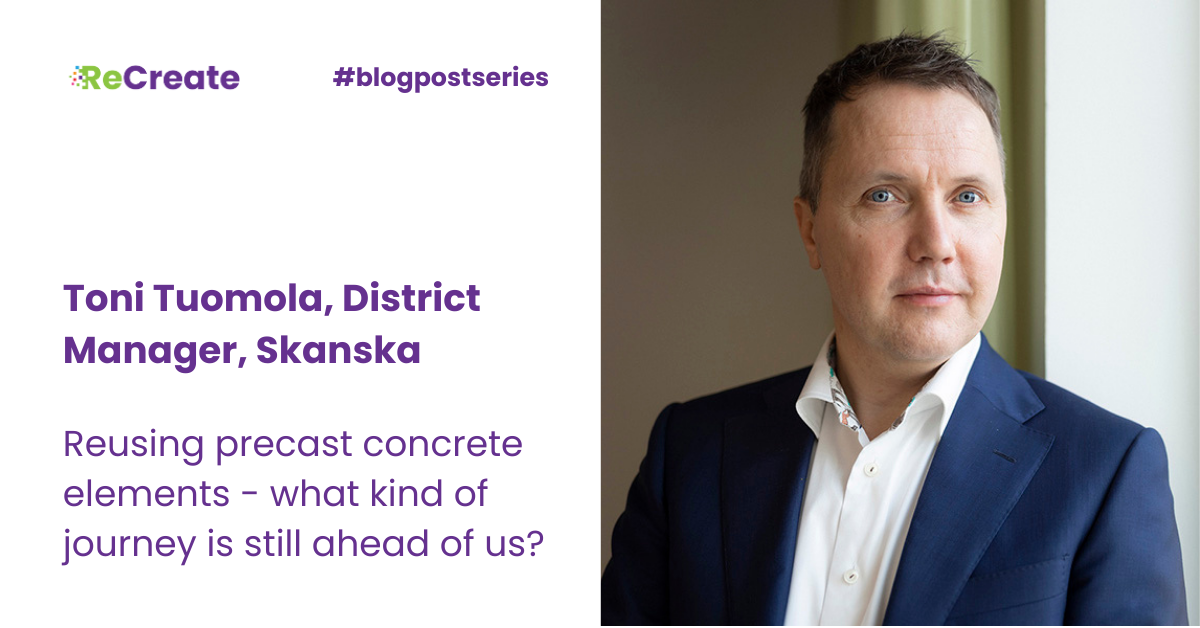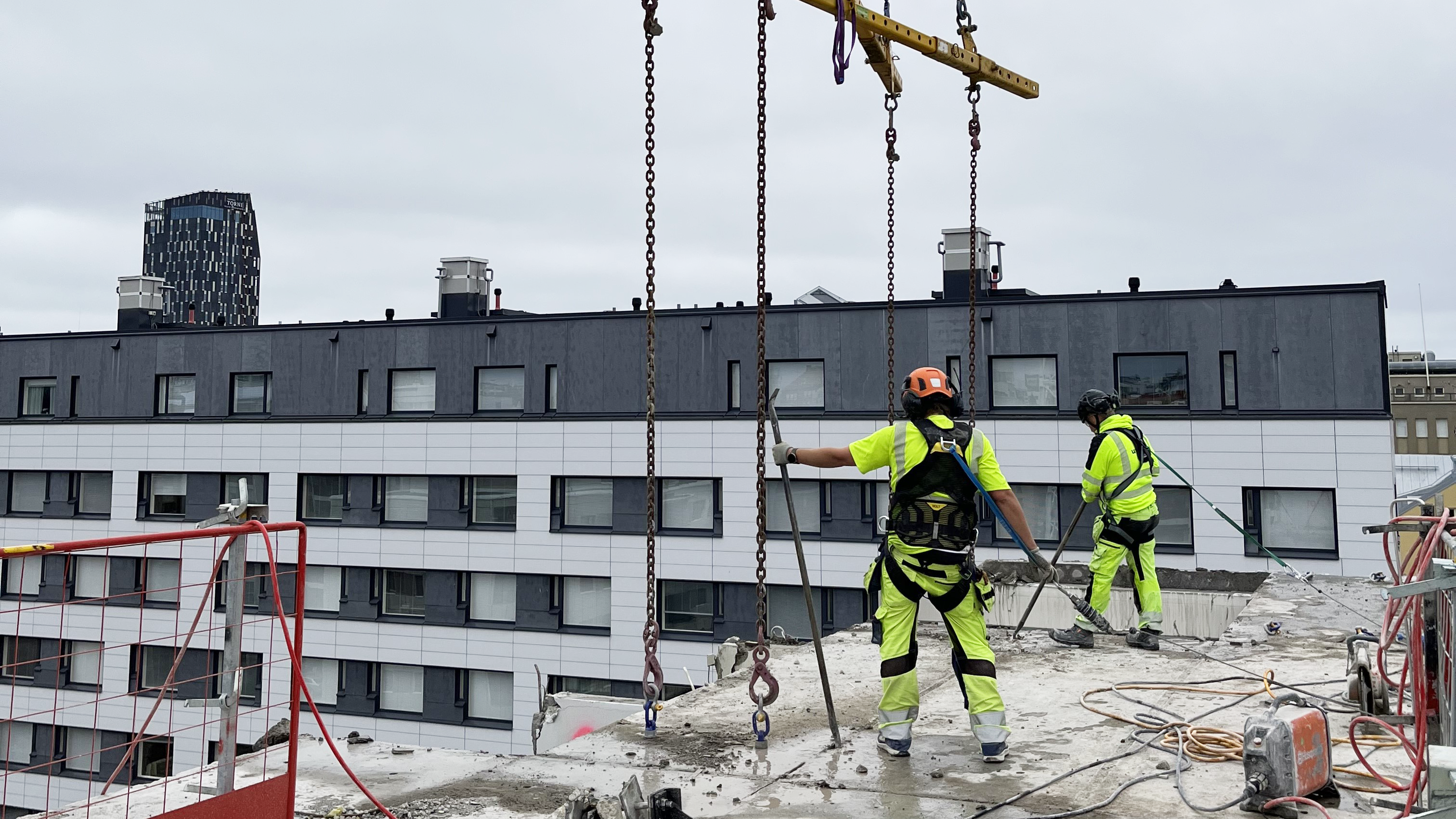
Toni Tuomola, District Manager, Skanska (Finland)
Skanska’s role in ReCreate is strongly linked to its goal of building a better society. Being climate-smart – one of our sustainability themes – supports the achievement of this goal. Within the ReCreate project, we are studying how to produce low-carbon solutions through our business operations. ReCreate will provide us with information on how the circular economy of building elements could be promoted in the future – for example, in the planning phases of construction projects. We can have a major influence over the carbon footprint of a project’s outcome, especially in in-house development projects and, above all, in projects where we are responsible for the design.
ReCreate’s Finnish deconstruction pilot site is a 1980s office building in the city of Tampere. The precast concrete frame has been dismantled using a new technique developed and studied as part of the project. Construction projects are complex entities that demand close cooperation to meet targets. We have already worked with the ReCreate project partners for a couple of years on studies and advance preparations to facilitate the practical deconstruction work. Thanks to the studies, we were capable of dismantling the precast concrete elements intact for reuse. We also know how to verify the properties of reusable elements reliably and cost-effectively.

The possibility of technical implementation alone is not enough
Creating a business ecosystem for reusing building elements is an important part of the project. Reuse requires off-site production plants for factory refurbishment and the creation of an entire logistics chain and information management process to put the elements to use again. A marketplace is also needed to bring product providers and users together. Barriers must be lowered in building regulations and practices, and operating models must be harmonized.
What are the implications if reuse is successful? Firstly, the environmental benefits will be significant because the carbon footprint of reused concrete elements is about 95% smaller than that of corresponding new elements. Therefore, it will be possible to realize a substantial decrease in the carbon footprint of new buildings. Reused elements may not necessarily be used to construct entire buildings, but they would be utilized in the most suitable places. This would ensure that the dimensional and strength properties of reused elements can be used to the best effect.
The reduction in the carbon footprint helps us to meet the low-carbon requirements that will be introduced through regulation in the future. Environmental certification programs such as LEED and BREEAM also award extra points for reusing building materials.
Decommissioning a building by deconstructing elements is slower and more expensive than conventional destructive demolition. However, prior international research has found that a reused element can be as little as 30% of the price of a new element. This is an important perspective for projects researching business opportunities based on the circular economy.
A climate-neutral society is the sum of many parts, large and small. The circular economy of precast concrete elements is one factor among many. We need all the parts to work together to reach this goal.

